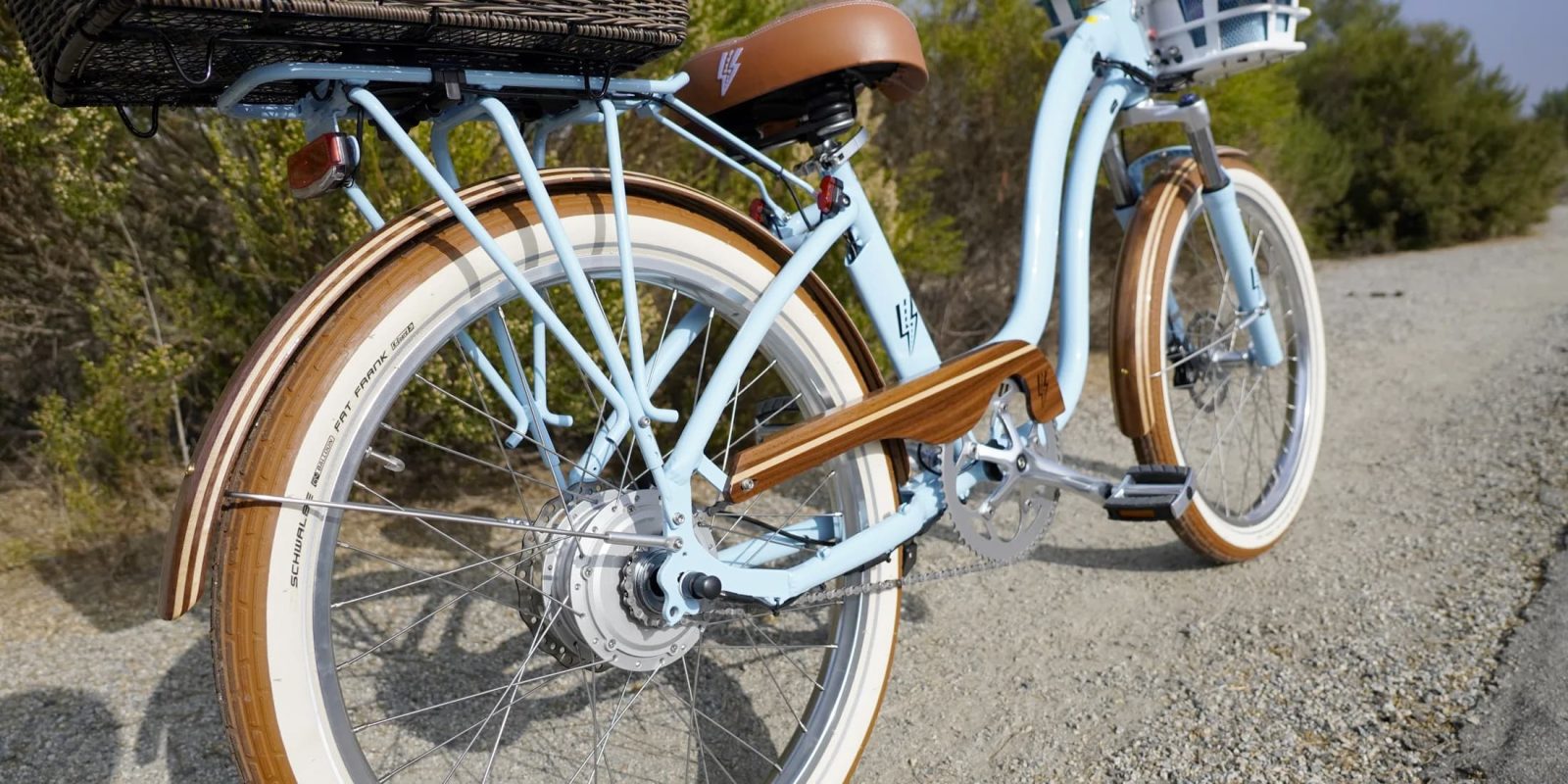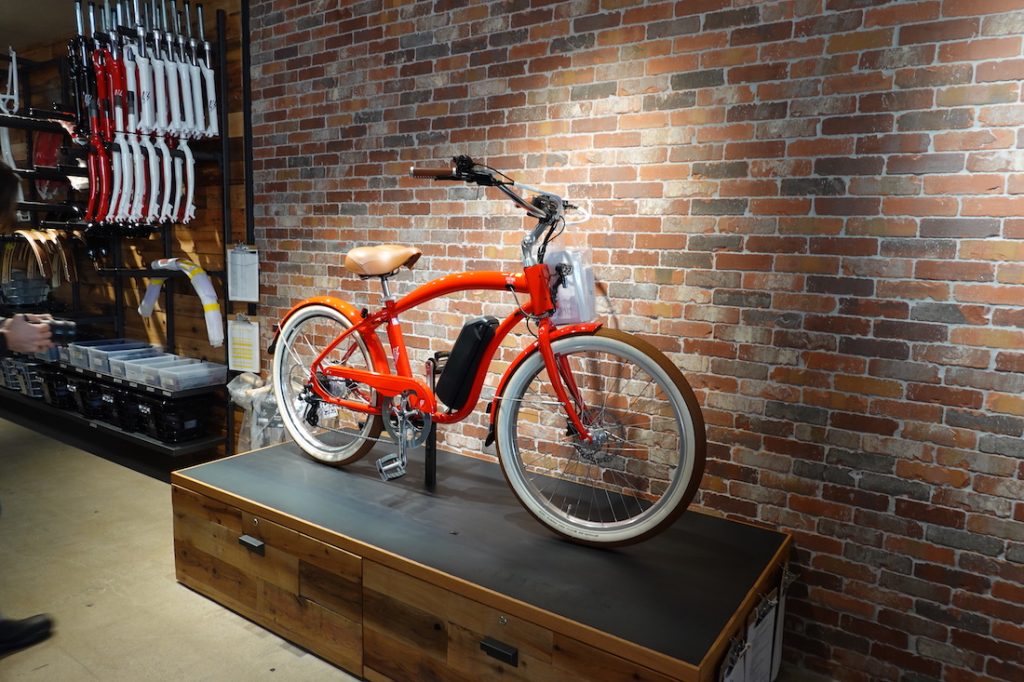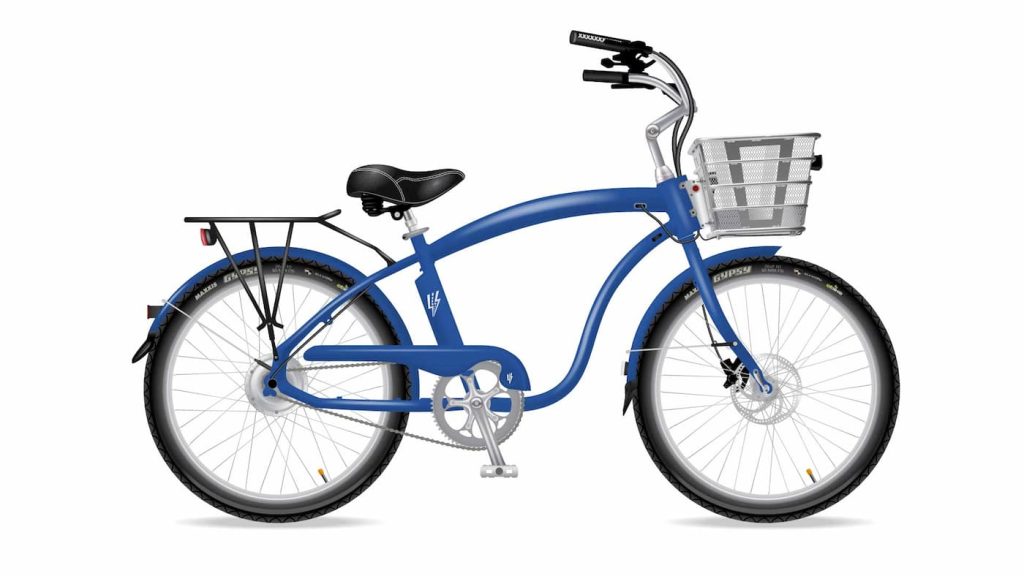
Newport Beach, California-based Electric Bike Company has just announced a big upgrade option to two of its slick cruiser e-bike models. The Model A and Model X now both come with the option for a torque sensor for their pedal assist operation.
If you’re not familiar with a torque sensor or how it effects e-bikes, prepare to have your mind blown.
Most value-oriented electric bikes (i.e., in the sub-$2,000-ish category) use what is known as a cadence sensor to activate pedal assist. The cadence sensor is a less refined component that basically measures how fast the user is spinning the pedals and uses that to apply pedal assist power from the electric motor.
The result is effective at starting up the motor when the user pedals, but it has a several limitations. There is an inherent lag while the sensors waits to measure pedal speed, meaning it can take a second or two for the motor to kick in. Cadence sensors also have less resolution, meaning they aren’t as precise at measuring pedal input. And they have a fundamental disadvantage of only measuring pedaling speed, which is often doesn’t correlate directly to pedaling effort (e.g., hills, heavy loads, changing gears, etc).

A torque sensor, on the other hand, measures how hard a rider pushes on the pedals. It allows nearly instantaneous feedback and offers a much more precise way to apply an exact amount of power based on how hard the rider is working. The harder the rider is attempting to pedal, the more motor power can be applied. That helps it intuitively read a user’s input and makes it feel more like the motor is just an extension of the rider’s own muscles, rather than a delayed on/off switch for the motor.
Granted, e-bike controller engineers have come a long way with cadence-based pedal assist sensor programming, and we’ve seen big improvements over the years that has improved cadence sensor performance. But there is simply no comparison to a true torque-based sensor for natural feeling pedal assist.
Normally e-bikes with torque sensors cost significantly more than cadence sensor-based e-bikes, but Electric Bike Company has now announced a torque sensor option on its Model A and Model X e-bikes for just $99.

Both are electric cruiser bikes, with the Model A standing for “Affordable.” Starting at just $1,499, the Model A offers a top speed of 28 mph (45 km/h), though it ships in Class 2 mode with a 20 mph (32 km/h) limit. A 50-mile (80 km) maximum range is possible with pedal assist on a single charge of the bike’s battery, which comes with a five-year warranty. The frame and motor have a longer 10-year warranty.
Hydraulic disc brakes, a rear rack, LED lighting, and a color LCD screen are all included as standard equipment. All of the company’s bikes uses stainless steel hardware for superior rust resistance — something that has proven important for a beach town-based company that builds bikes often used along the salt-spraying coasts.
All of Electric Bike Company’s e-bikes are hand-assembled at the company’s multiple facilities in the heart of Newport Beach, California. We’ve had the chance to visit and watch those e-bikes being built starting from bare frames and on through the steps of wheel building, painting, component assembly, battery pack assembly, testing, and shipment. In fact, the company recently expanded its paint shop and offers the most customizable e-bikes in the country — and probably the world — with thousands upon thousands of custom color combinations across all of the components. They even offer their own custom painted helmets now to match their bikes, complete with included front and rear LED lighting built right into the helmet.
You can see how the company builds its own e-bikes in my video below.
FTC: We use income earning auto affiliate links. More.












